Anyone can come up with an app idea. But your mobile app ideas alone probably won’t be enough to pitch investors or impress company stakeholders.
Creating an app prototype will give you a significant advantage in these scenarios.
When you create prototypes, it shows potential partners, investors, and stakeholders that you’re serious about the project. It also gives everyone an opportunity to see the look and feel of your software development project instead of just reading words on a page or hearing you talk.
This in-depth guide explains everything you need to know about mobile prototypes and how to make them.
What is a Mobile App Prototype?
Mobile app prototypes are preliminary mock-ups that look and feel like real apps. App prototypes exhibit the app’s fundamental purpose and design but do not contain any functional code.
App prototypes can come in all different shapes and sizes. Some are just basic sketches, while others are high-fidelity prototypes, interactive prototypes, or clickable prototypes.
You can create different types of prototypes at each stage of the app design process. Your idea might start as a hand-drawn sketch on a piece of paper. These types of prototypes are crucial during the early brainstorming phases of app development, and they allow your design team to quickly iterate the ideas.
Low-fidelity prototypes often transform into digital prototypes that showcase the app’s functionality. These prototypes display the app’s basic structure and big-picture vision.
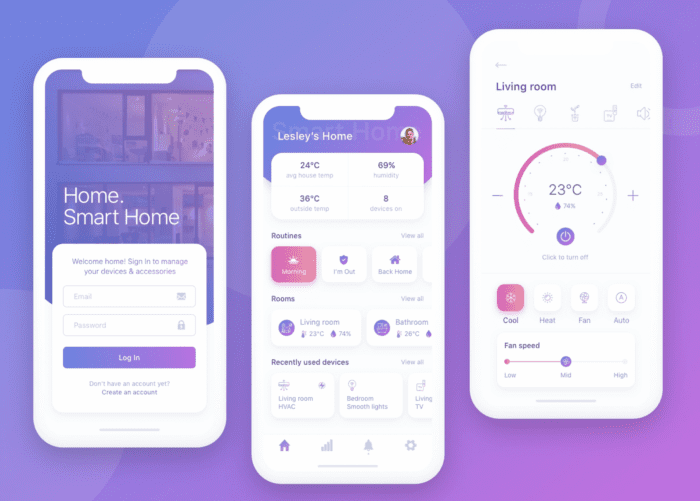
Benefits of App Prototyping
There are lots of different advantages to prototyping in the development process. Let’s take a closer look at the top reasons why you should create a prototype:
- Fast Iterations — Even if you already have a clear vision of your app concept, prototypes let your team cycle through multiple drafts and versions of the idea before writing any code. This helps with quick iterations during the planning stages and even helps validate ideas.
- Improve Clarity — Prototypes help get your entire development team on the same page. They align the creative ideas with the designers, developers, project managers, and stakeholders. You can even use early prototypes to get quick feedback before proceeding with user testing or more advanced market research.
- Enhanced Selling — For those of you taking your app idea to an investor pitch in an effort to receive funding, a prototype will help you stand out. It’s tough for prospective investors to pour money into an idea without knowing what the final product will look like. In addition to selling your ideas to investors, you can also use a prototype for selling your idea to your board of directors or even prospective customers.
- Low Risk — Creating a prototype gives you the opportunity to fail early with virtually no risk. During the prototyping process, you and your team may realize that the idea isn’t very practical and won’t turn out the way you initially envisioned. It’s much better to come to this realization at this stage when there’s very little investment in the project.
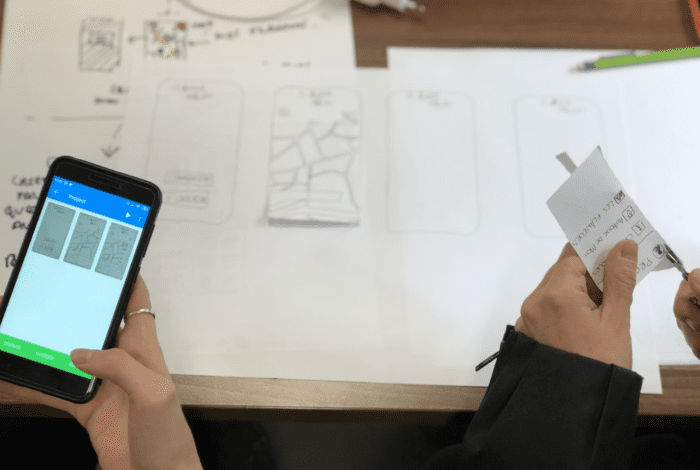
How to Make a Mobile App Prototype
Now that you understand what a prototype is and why it’s so important, it’s time to create a prototype for your mobile app. Just follow these simple steps below to get started:
Define the Problem
The first step of creating an app prototype is similar to the first stage of making an app. You need to identify the problem that your app will solve.
For some of you, this might seem fairly simple. But you’d be surprised how many people come up with an app idea just because it sounds cool—even though it’s actually not solving a problem or addressing a market need.
If you’re going to pitch an app idea to investors, partners, or a board of directors, they’ll shoot it down immediately if it’s not meeting a market demand that solves a problem.
Don’t try to skip or breeze through this process. Taking the time to clearly understand the goal and purpose of your app will become the foundation for every aspect of the development project.
Identify Key Functions
Now that you’ve figured out the problem, you need to come up with features that will address that problem. In short, you’re defining the app’s functionality.
You can start the brainstorming process by listing all potential features that the app could have. But then you’ll want to narrow the focus specifically to functions that serve as a core requirement for the app to work.
Don’t get carried away here. Yes, any app “could” have certain functions. But ask yourself—does it really need this function for the app to work?
If the answer is no, then you can skip it now for the prototyping phase. You can always come back to this idea later on down the line. Stick with a maximum of five key features and design your prototype around that functionality before you worry about all the screens.
Sketch Your Ideas
Now it’s time to take your ideas and put them on paper. This step is the earliest part of the design process and doesn’t require a prototyping tool just yet.
You can draw your initial sketches and UI elements with a pen and paper.
Take the primary functions from the previous step and start to think about the user experience. How will the user interfaces look when real users want to complete a task using the app?
If you’re stuck, you can always look to existing apps for inspiration. Borrowing ideas from other successful apps on the market can really help mold and shape your sketches.
These sketches aren’t supposed to have advanced animations or act as a working prototype. You just want to create a fluid UI for your first prototype that will eventually transform into something more tangible throughout the process.
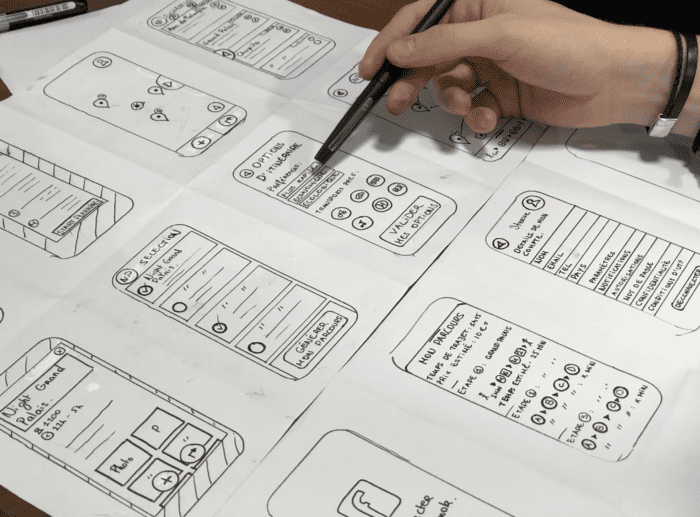
Use Your Sketch to Create a Wireframe
Now you can take your sketch and bring it to the next level by creating digital assets. Start with a low-fidelity wireframing tool to speed up the process.
Many people confuse wireframes with prototypes. While the two terms are related, they’re actually very different.
Wireframes will contain the basic layout and structure of the app, which is something you’ll need to create a prototype. But a prototype is much more advanced.
The best prototypes show more attention to detail in terms of design and visuals. Some prototypes are even clickable and interactive. You can think of the wireframe as your bare-bones structure of the prototype at its most basic level.
Turn Your Wireframe Into a Mobile App Prototype
As mentioned above, prototypes essentially turn wireframes into something more advanced. You’ll definitely want to use a prototyping tool to help you with this step, and we’ll discuss some options to consider shortly.
While your wireframes can be sent to your team members for feedback, the target audience of a prototype is a bit different. Prototypes are better for sharing with executives, decision-makers, investors, or even potential customers.
The idea of a prototype is to make the app feel real for anyone who might have a vested interest in the project. You can also hand a prototype off to your developers, so they have a better sense of what they’re building toward.
I like to think of the prototype as a way to bring the wireframes to life. You’re adding legs and giving the wireframe some personality when you create a prototype.
While a wireframe might just be used internally, a prototype is something that you can show off. You can add it to your website or even share it on social media as a way to build hype for your app and start promoting it before launch.
Best Prototyping Tools For Mobile Apps
Creating an app prototype is easier when you’re using a prototyping tool. While there are various tools on the market that seemingly offer similar solutions, the following five options are a good place to start your search:
Figma

Figma is branded as a collaborative interface design solution. It’s a web-based graphics editor and prototyping tool that’s an industry favorite amongst the design community.
This tool is really useful during the early stages of app development when you’re working collaboratively with a team for brainstorming. You can take advantage of its online whiteboard for workshopping ideas before bringing them to life with a prototype.
Then you can take those ideas and have them at your fingertips as you bring the design work from ideation to execution.
Figma even offers a free prototyping tool that you can use to design a mobile app.
Moqups
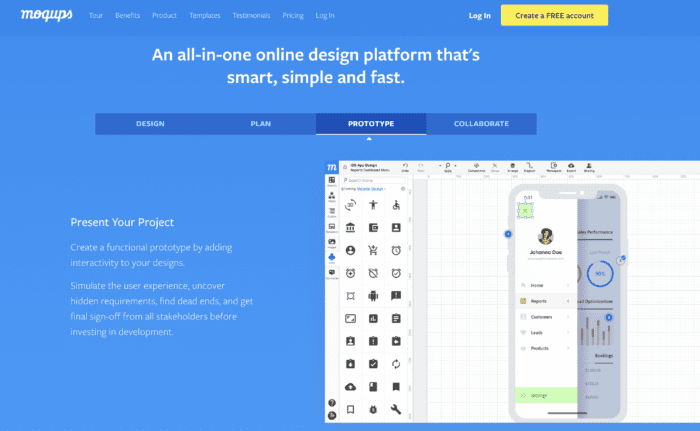
Moqups is an all-in-one platform for wireframes, UI design, and prototypes. This prototyping tool has been used by more than two million people to create a prototype.
The platform comes with out-of-the-box stencils for different use cases and design elements. This includes mobile app design for both iOS and Android.
You can use an extensive list of fonts and styling options to bring your mockups to life and easily drag and drop images to the prototype to fit your branding.
Plans for solo users start at just $13 per month.
BuildFire
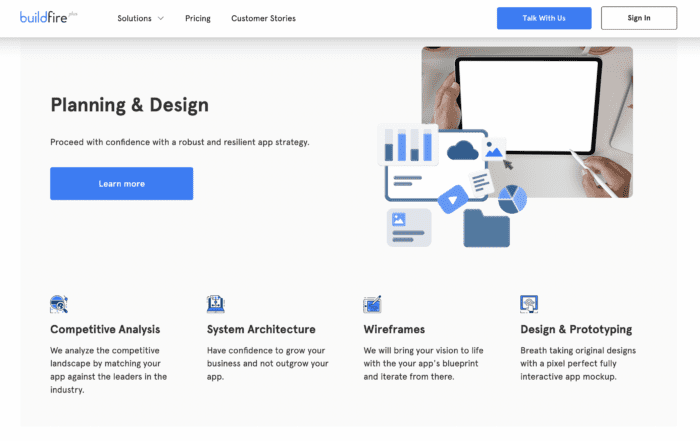
BuildFire is an app-building platform and app development service under one roof. It’s not actually a prototyping tool in the traditional sense, but you can still use BuildFire to create a prototype.
Here’s how.
BuildFire Plus is our all-inclusive design and development service. Our team can take your idea and turn it into a reality through each step of the process, including pre-launch and post-launch initiatives.
During these early stages, we’ll create a wireframe and eventually turn that wireframe into a prototype before we start building anything. This service is ideal for anyone who would rather pass off the app development responsibilities to a trusted development partner.
You’ll have the opportunity to review the wireframes and prototypes before any development begins, ensuring everyone is on the same page before the app gets built.
Justinmind
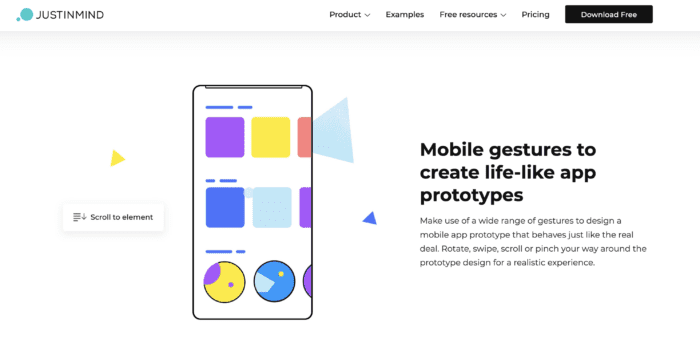
Justinmind is a free prototyping tool and UI design platform for mobile and web apps.
You can use it to transform your wireframes into a fully interactive prototype.
Unlike some of the other tools on our list, Justinmind is not a web-based solution. You do need to download software to your computer to use Justinmind to make a prototype. It’s available for both macOS and Windows machines.
The basic plan is free forever, and premium subscriptions for advanced interaction and design start at $9 per user per month.
Proto.io
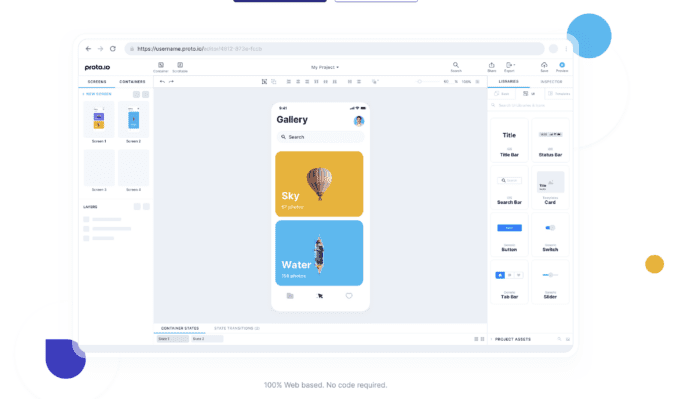
Proto.io is one of the most popular tools on the market for creating an app prototype.
It was initially built to work on mobile devices, but the platform has since expanded to a web-based version that still supports any mobile app prototype initiative.
What really makes this tool stand out from the crowd is its simplicity. It’s trusted by entrepreneurs, marketers, project managers, entrepreneurs, and UX designers. If you have a great idea and want to create a mobile app prototype, Proto.io makes it possible.
It’s a bit pricey compared to similar tools. There’s no free forever plan, and the entry-level package starts at $29 per month.
You can save up to 20% by committing to an annual contract, and you can try Proto.io with a 15-day free trial.
Final Thoughts on Mobile App Prototypes
Creating a prototype is a crucial step in the early stages of app development.
You can make a prototype on your own by following the steps in this guide and using one of the prototyping tools on the list above.
Alternatively, you can reach out to BuildFire and let us create a prototype for you.